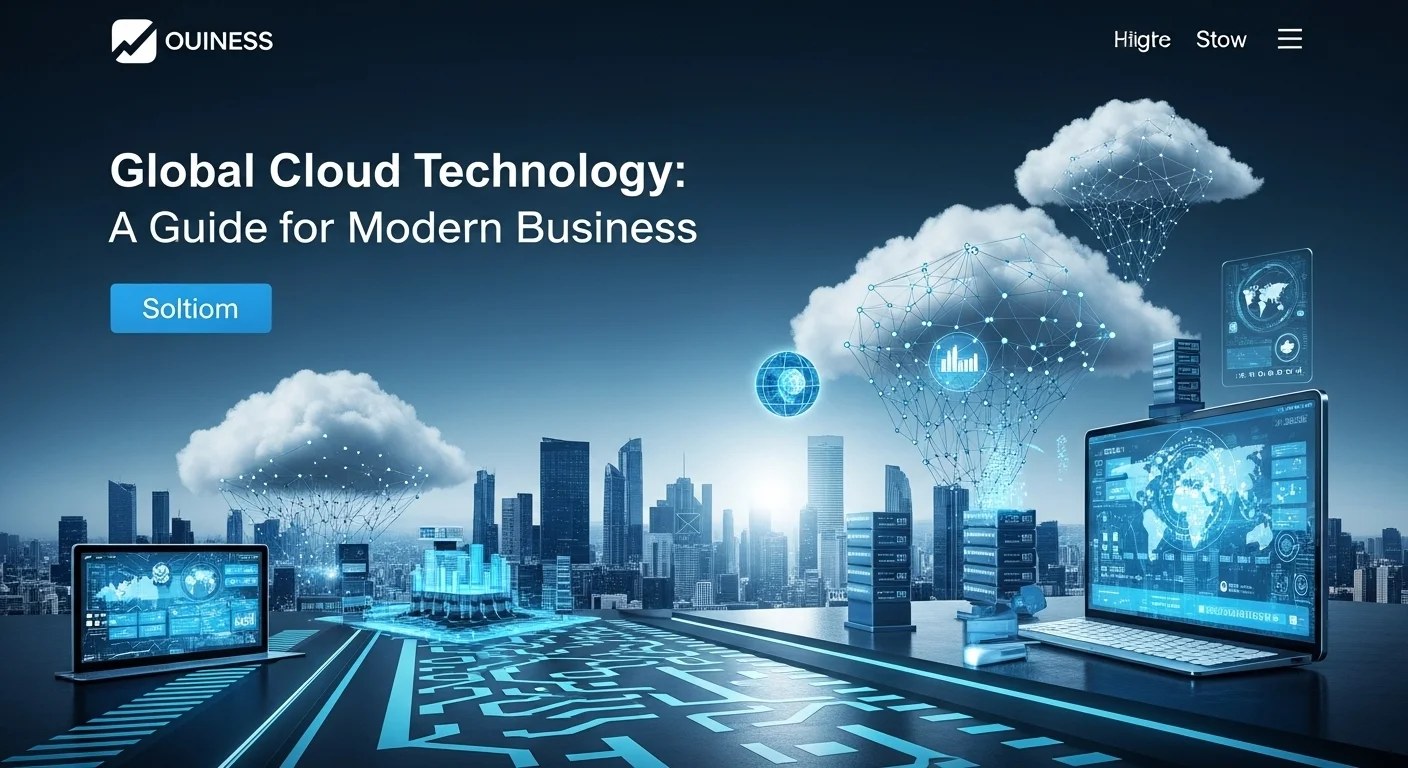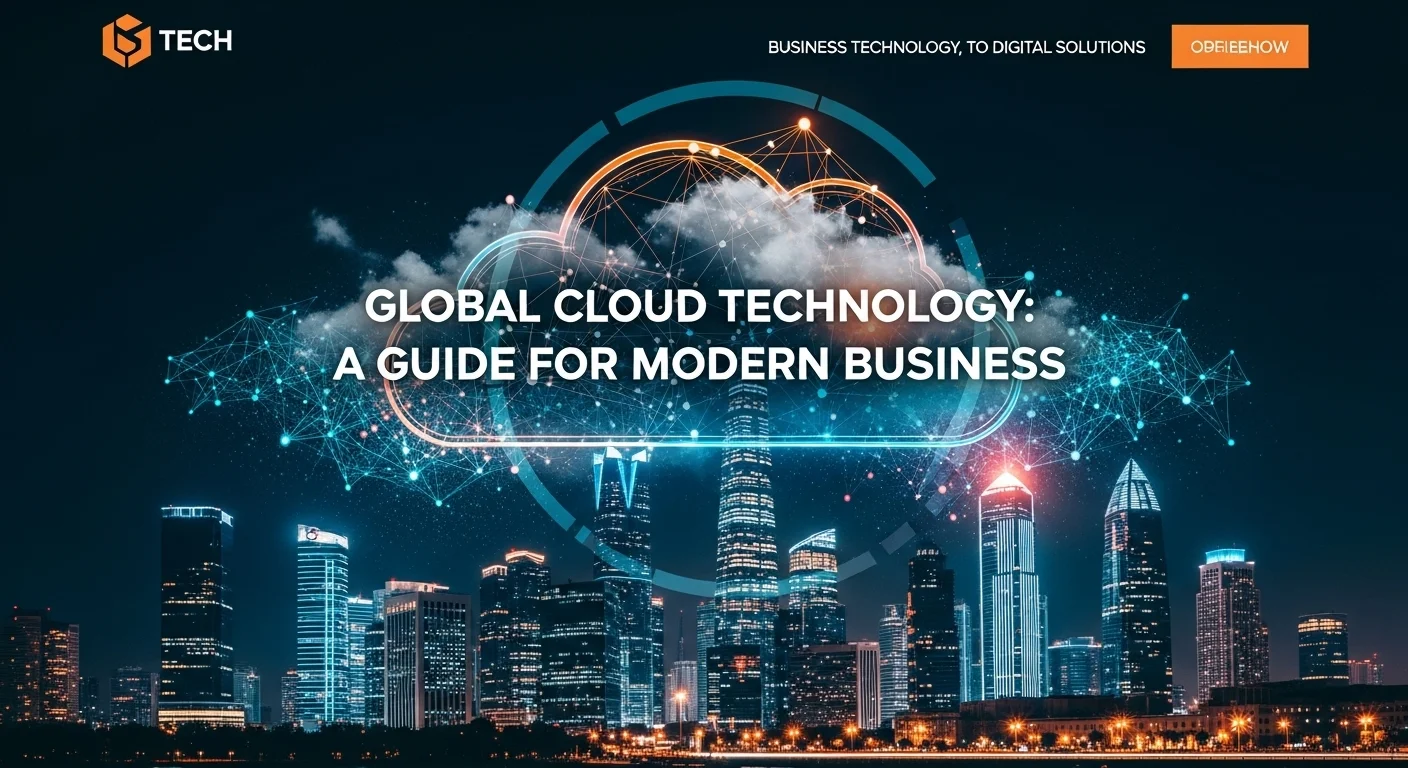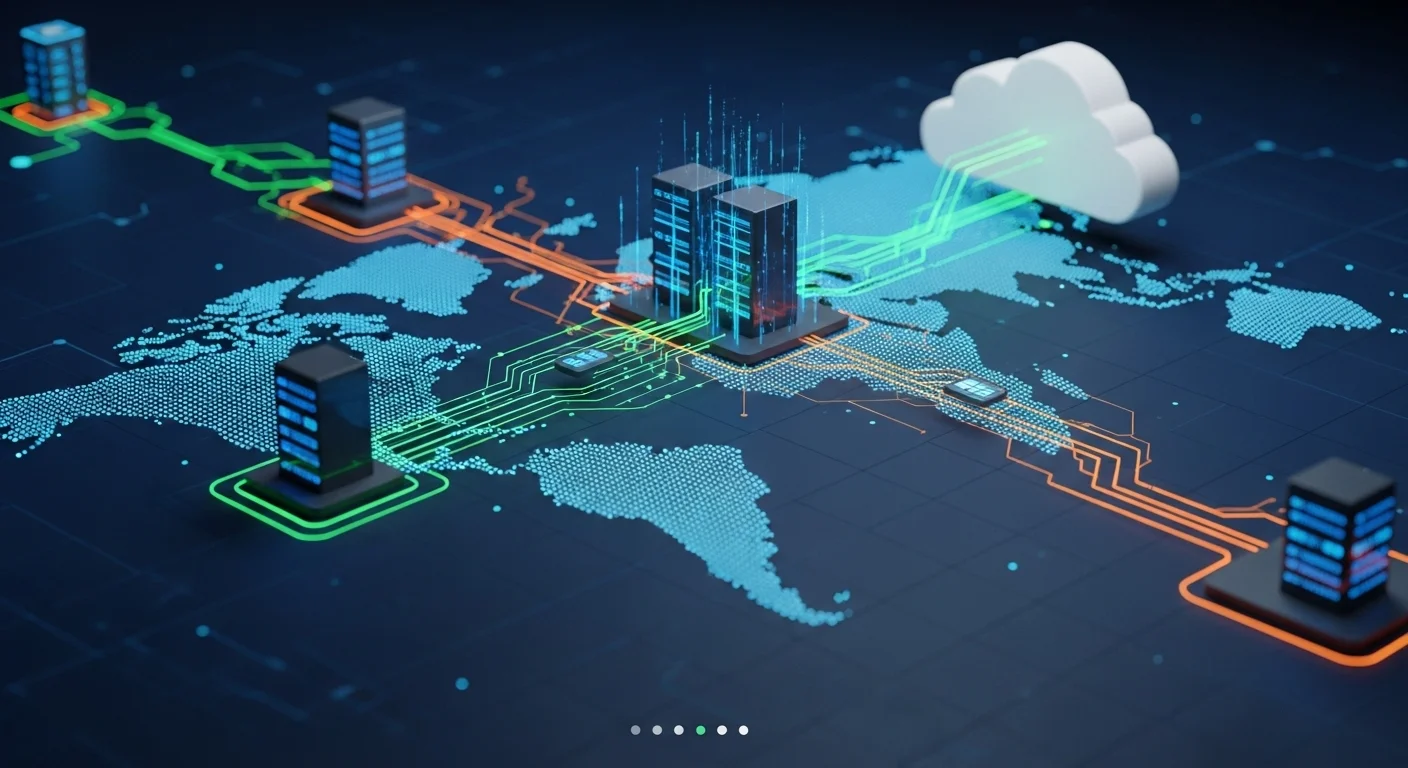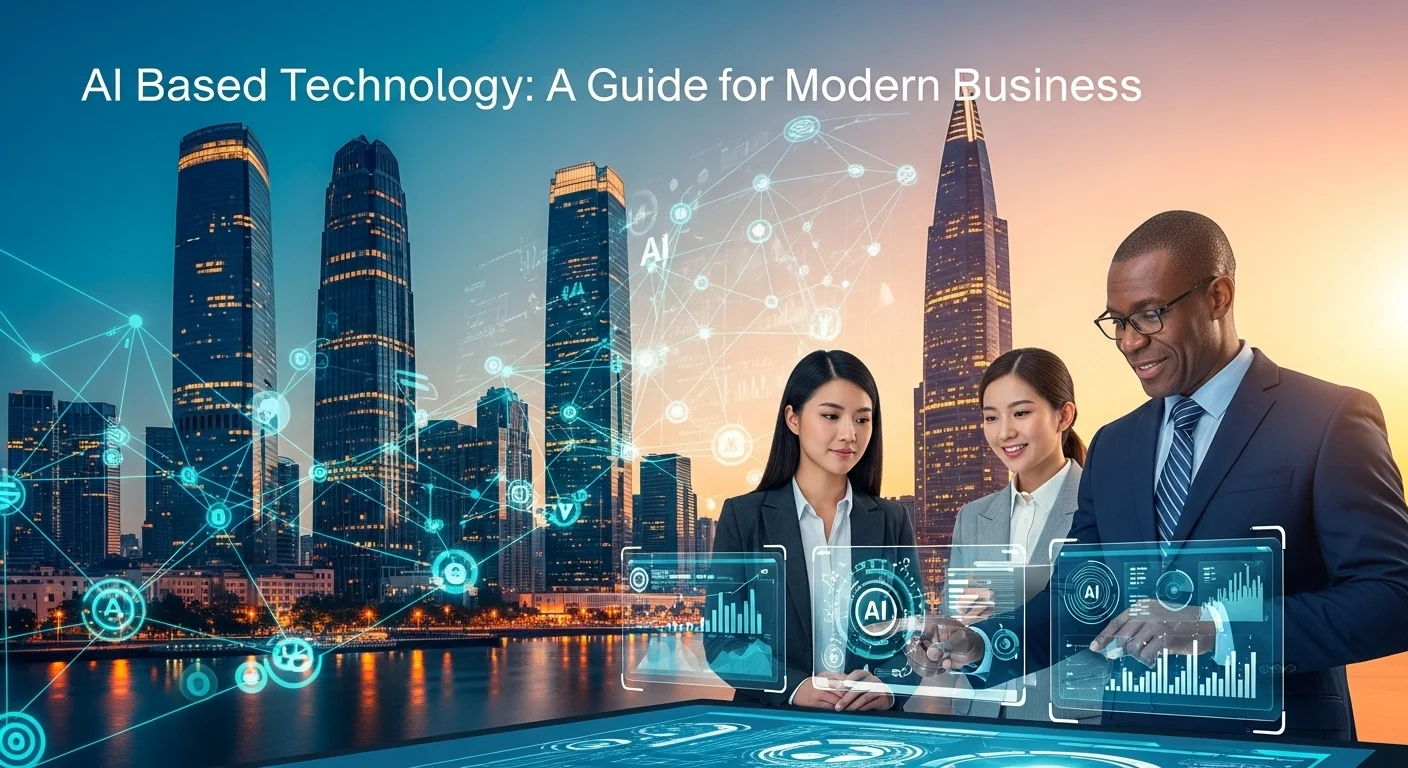The Global Cloud Explained: How to Take Your Business Worldwide

Executive Summary
I've spent years helping businesses make the leap to the cloud, and one of the biggest game-changers I've seen is the shift to a truly global mindset. We're moving beyond simple cloud storage to something far more powerful: Global Cloud technology. This isn't just a buzzword; it's the digital backbone that lets a small startup in one country serve customers on the other side of the planet as if they were right next door. In this guide, I'll walk you through what the Global Cloud really is, breaking down the massive infrastructure that makes it all possible. We’ll look at the key players like AWS, Azure, and Google Cloud, and explore the real-world benefits I've seen companies gain—from incredible user experiences to the freedom to innovate without limits. This is for anyone, from business leaders to tech lovers, who wants to understand how to use this worldwide network to build a stronger, more competitive business.
Table of Contents
Table of Contents
- What is Global Cloud, Really?
- The Foundation: A Look at Global Cloud Infrastructure
- The Incredible Growth of the Global Cloud Market
- Real-World Business Applications and Benefits
What is Global Cloud, Really?
For years, we've all talked about 'the cloud' as if it's some single, ethereal place. But as businesses have grown beyond borders, the cloud itself has had to evolve. That evolution is what we call the Global Cloud. So, what is it? Simply put, it's taking the idea of cloud computing and stretching it across the entire planet. Instead of your data and applications living in one location, they're hosted in a worldwide network of data centers, all working together as one seamless system. Why does this matter so much? Imagine you have an e-commerce website. If your servers are in California, a customer in Japan is going to have a slow, frustrating experience because their request has to travel halfway around the world and back. In our impatient world, that lag, or 'latency,' is a business killer. Global Cloud technology solves this by placing copies of your data and services much closer to your users, wherever they are. It’s the difference between mailing a letter across the ocean and having a local courier deliver it in minutes. That speed and reliability is no longer a luxury; it's the foundation of any modern, international business.
The Foundation: A Look at Global Cloud Infrastructure
The magic behind the Global Cloud isn't really magic at all—it's an incredible feat of engineering. This global cloud infrastructure is a sophisticated web of physical hardware strategically placed all over the world. Here’s what it’s made of:
- Data Centers and Regions: Think of Regions as the major hubs. The big global cloud providers like Amazon Web Services (AWS), Microsoft Azure, and Google Cloud have carved the world into dozens of these geographical Regions. Each one is a cluster of massive data centers, completely separate from the others, which is great for stability. If a hurricane hits the US East coast, your services in Europe and Asia keep running without a hiccup.
- Availability Zones (AZs): Now, zoom into a single Region. Inside, you'll find multiple Availability Zones. An AZ is essentially one or more data centers with its own power, cooling, and network. They're close enough for high-speed connections but far enough apart to be isolated from each other's failures. This is how providers offer such high uptime. If one AZ goes down, your application can automatically hop over to another one in the same region, and your users never notice a thing.
- Edge Locations (CDNs): To get even faster, providers use a network of 'edge locations.' These are smaller caches of data stored in major cities worldwide, much closer to people than the main Regions. They're used for Content Delivery Networks (CDNs), which store copies of your website's images, videos, and files. When someone visits your site, that content is served from the nearest edge location, making load times lightning fast.
- Private Global Networks: This is the secret sauce. The top providers have laid their own private, high-speed fiber optic cables under the oceans and across continents to connect all their locations. This private network is faster, more reliable, and more secure than sending data over the public internet, and it’s what makes the entire global cloud computing ecosystem perform so well.
The Incredible Growth of the Global Cloud Market
The move to the cloud isn't just a trend; it's a full-blown revolution, and the numbers are staggering. The global cloud computing market is already worth hundreds of billions of dollars and is on a trajectory to break a trillion dollars before we know it. I've seen this firsthand. Companies are realizing that the cloud isn't just about saving money on servers anymore. It's about speed and agility. It's about being able to test a new idea without a huge upfront investment and being able to scale up instantly to meet a surge in demand. The pandemic threw gasoline on this fire, forcing companies to support remote work and handle a massive spike in online activity. Today, the market is also diversifying. It's not just about raw infrastructure (IaaS); it's about platforms that help you build (PaaS) and software that just works (SaaS). Technologies like AI, machine learning, and IoT are demanding a level of computing power that only the global cloud can provide. The field is led by the 'big three' global cloud providers—AWS, Microsoft Azure, and Google Cloud. They're in a constant race to build more, innovate faster, and offer better prices, and that competition is fantastic for all of us who rely on their services.
Real-World Business Applications and Benefits
The most exciting part is seeing how this technology completely changes what's possible for a business. The promise of 'going global in minutes' is real. I've worked with startups that launched their product on three continents simultaneously—something that would have been a logistical and financial nightmare a decade ago. Here are some concrete examples:
- Media and Entertainment: Look at Netflix. They use AWS's massive global cloud infrastructure to stream movies to millions of people all over the world. By caching shows in regions close to viewers, they make sure you get a smooth, buffer-free experience whether you're in Boston or Berlin.
- E-commerce: For any online store, Black Friday is the ultimate test. Using a global cloud computing model, they can automatically add more server power when the traffic wave hits and then scale back down when it's over to save money. This elasticity means the site stays up, and they don't lose sales to crashes.
- Gaming: If you've ever played an online multiplayer game, you know that lag is the enemy. Gaming companies use the global cloud to host game servers in different regions, so players can connect to the one closest to them. This ensures a fair and fun experience for everyone.
- Business Software: Companies like Salesforce and Microsoft 365 serve millions of users. They rely on global cloud providers to host their applications, ensuring they're always available, secure, and compliant with data laws like GDPR in Europe.
The benefits go even deeper. Distributing your application across the globe gives you incredible resilience. A natural disaster can take out an entire region, but your business stays online. Plus, you get access to world-class security and compliance certifications that would be nearly impossible to achieve on your own. At its heart, the Global Cloud is about breaking down barriers. It gives businesses of all sizes the power to operate on a global stage with the kind of speed and agility that the modern world demands.

A Practical Guide to Global Cloud Business Solutions
Stepping into the world of global cloud computing is more than a technical upgrade; it's a strategic business decision. To get it right, you need a clear plan. This is the part where the rubber meets the road. I'll walk you through how I advise clients on choosing the right partners, designing architectures that won't fall over, and navigating the competitive global cloud computing market.
Choosing Your Global Cloud Service Providers
Your first big decision is picking a provider. While there are many options, the industry is dominated by the three 'hyperscalers': Amazon Web Services (AWS), Microsoft Azure, and Google Cloud Platform (GCP). The best choice isn't always obvious and often depends on your company's unique DNA. Increasingly, I see businesses adopting a multi-cloud approach—using a mix of providers to get the best of all worlds and avoid being locked into one ecosystem.
A Real-World Look at the 'Big Three'
When clients ask me to compare the top global cloud providers, I tell them to think about it like this:
- Amazon Web Services (AWS): AWS is the veteran. They were first to market and have the most extensive list of services and the largest global footprint. For this reason, it's often the go-to for startups and companies that want the widest array of tools and maximum flexibility. Their infrastructure is rock-solid and battle-tested. If you want the most mature platform with the biggest community, AWS is a safe and powerful bet.
- Microsoft Azure: Azure's superpower is its connection to the enterprise world. If your company already runs on Windows Server, Office 365, and other Microsoft products, Azure feels like a natural extension. Their hybrid cloud solutions—mixing your own data centers with the public cloud—are particularly strong. Microsoft has also made a massive push for global coverage, boasting more official regions than anyone, which is a huge plus for data residency and compliance.
- Google Cloud Platform (GCP): Google Cloud is the innovator, born from the same infrastructure that powers Google Search and YouTube. Their strengths lie in cutting-edge areas like networking, big data, machine learning (AI/ML), and Kubernetes for containers. Their private global network is famously fast, offering incredibly low latency. I often recommend GCP to companies that are data-heavy and want to build sophisticated, cloud-native applications with top-tier analytics and AI.
How to Make Your Choice:
When you're at this crossroads, here’s the checklist I use with my clients:
- Global Reach: Pull up the providers' world maps. Where are your customers? Which provider has data centers closest to them? Don't just trust the map—run some tests to check the actual performance.
- Available Tools: Does the provider have the specific database, AI tool, or industry solution you need? Look at the maturity of those services.
- The Price Tag: Cloud pricing is notoriously complex. Use their official calculators to model your expected costs. Look beyond the sticker price at options like reserved instances and savings plans, which can save you a fortune.
- Security & Compliance: This is non-negotiable. Does the provider meet the standards for your industry, like HIPAA for healthcare or GDPR for Europe? Understand their security tools and your role in the 'shared responsibility' model.
- Support & Ecosystem: How good is their documentation and training? What level of technical support will you need? A strong partner network and marketplace can also be a lifesaver.
Architecting for a Global Audience
Once you've picked a partner, it's time to design your application. A global architecture is all about spreading your workload across the global cloud infrastructure to deliver a fast and reliable experience for everyone, everywhere.
Core Architectural Patterns:
- Multi-Region Deployment: This is the foundation. You run your application in more than one geographic region. It's your best defense against disaster and your best tool for performance. If a region goes down, you can redirect users to a healthy one.
- Active-Active vs. Active-Passive: Think of active-passive like having a backup generator; one region does all the work while the other is on standby. In an active-active setup, it's like having two power plants running at once, with both regions actively serving users. It's more complex but offers better performance.
- Handling Data Across the Globe: This is often the biggest headache. You need to copy your data across regions, but this brings up a big question: consistency. Do you need a change to be reflected everywhere instantly (strong consistency), or is it okay if it takes a few moments to catch up (eventual consistency)? Most global apps use the latter for better speed. Services like Amazon's DynamoDB Global Tables are built specifically for this.
- Smart Traffic Routing: You need a traffic cop. Services like AWS Route 53 or Azure Front Door can intelligently send users to the best region for them based on location, health, and network speed.
- Content Delivery Network (CDN): I can't stress this enough: for any global website, a CDN is a must-have. It caches your static content in edge locations around the world, making your site load dramatically faster for users and taking a huge load off your servers.
Integrating AI and Cybersecurity into Your Global Strategy
A modern cloud plan isn't complete without thinking about AI and security from day one. The global cloud providers give you incredibly powerful tools for both.
Putting AI to Work:
The cloud is the perfect playground for AI. The sheer scale of the global cloud infrastructure lets you train and run complex AI models that would be impossible otherwise. Globally, you can use AI for:
- Personalization: Showing different content or products to users in Japan versus Germany based on their behavior.
- Smart Automation: Automating things like your supply chain or using multi-lingual chatbots for customer support.
- Predictive Analytics: Analyzing global sales data to spot trends and predict what customers will do next.
Facing Global Security Threats:
Operating globally means you're a bigger target. Your security has to be rock-solid.
- Identity and Access Management (IAM): Be ruthless about who can access what. Enforce the rule of 'least privilege' and use multi-factor authentication (MFA) for everyone.
- Network Security: Use firewalls and virtual private clouds (VPCs) to build walls around your resources. Use tools like AWS Shield to protect against massive DDoS attacks.
- Data Protection: Encrypt everything—data sitting in storage and data moving across the network. Be very aware of data sovereignty laws that require you to store citizen data within a country's borders.
- Constant Vigilance: Use tools like AWS GuardDuty or Azure Sentinel to act as a 24/7 security guard, constantly scanning your global setup for suspicious activity.
By being strategic in your choice of global cloud service providers, thoughtful in your architecture, and proactive with AI and security, you can turn the power of global cloud computing into your business's greatest competitive advantage.

Tips and Strategies to Master Your Global Cloud Experience
Getting your business onto the global cloud is just the beginning. The real art lies in continuously refining your setup to get the most out of your investment. It's about building a culture of excellence. Over the years, I've seen what separates the companies that just use the cloud from those that truly master it. This section is my playbook of practical tips, essential tools, and a look at what’s coming next in the world of global cloud computing.
Best Practices for Operational Excellence in a Global Environment
Managing a system that spans continents can get messy fast. Sticking to a few core best practices is the key to staying sane and keeping your services stable and efficient.
- Treat Your Infrastructure as Code (IaC): If there’s one piece of advice I hammer home, it’s this. Stop clicking around in the console to set things up. Define your entire global cloud infrastructure in code using tools like Terraform or AWS CloudFormation. This makes your deployments repeatable, automated, and far less prone to human error. You can track changes, roll back mistakes, and spin up an identical environment in a new region in hours, not weeks.
- Become an Expert in Observability: You can't fix what you can't see. With a global system, you need a single pane of glass to monitor the health of everything. Use tools like Amazon CloudWatch or Datadog to bring together the three pillars of observability:
- Metrics: Track everything from server CPU to how many users are signing up in each region.
- Logs: Funnel all your system and application logs into one place. When something breaks, this is your treasure map to find out why.
- Traces: Follow a user's request as it bounces between services and across regions. This is how you hunt down those mysterious performance bottlenecks.
- Automate Relentlessly: Automation isn't just for deployment; it's for operations. Automate your software releases. Automate your scaling policies to handle traffic spikes. Most importantly, automate your responses. Set up alarms that automatically re-route traffic away from a failing region. This drastically reduces downtime and frees your engineers from stressful, late-night firefighting.
- Adopt a 'Zero Trust' Security Mindset: In a global, distributed world, the old idea of a secure network perimeter is dead. Assume that any request, from anywhere, could be a threat. A Zero Trust model means you 'never trust, always verify.' Every single request to access a resource must be authenticated and authorized, even if it's coming from inside your own network. This, combined with multi-factor authentication and encryption, is the gold standard for security.
- Live and Breathe the Shared Responsibility Model: Never forget that cloud security is a partnership. Your global cloud service provider is responsible for securing the physical data centers and network (security *of* the cloud). You are responsible for everything you put *in* the cloud—your data, your applications, and your configurations. A simple misconfiguration on your end can lead to a major breach, so this is a responsibility to take seriously.
Essential Tools and Cost Management Strategies
The cloud's pay-as-you-go model is amazing for flexibility, but it's also famous for producing terrifyingly large bills if you're not careful. I've seen it happen too many times. Being proactive about managing costs (a practice known as FinOps) is critical.
Your Cost-Saving Toolkit:
- Cost Visualization Tools: Get familiar with AWS Cost Explorer or Azure Cost Management. Use these to see exactly where your money is going. The most important practice here is 'tagging'—label every resource with its project, team, or purpose. Without tags, you're flying blind.
- Budgets and Alerts: This is basic but essential. Set budgets and create alerts that yell at you when spending is about to go off the rails. This simple step prevents month-end bill shock.
- Reserved Instances (RIs) & Savings Plans: If you have workloads that are always on, like a core database, commit to them. By telling your provider you'll use a certain amount of compute for one or three years, you can get discounts of up to 70% or more. This is the single biggest cost-saver for most companies.
- Spot Instances: For jobs that can be interrupted, like data processing or testing, use Spot Instances. This is spare compute capacity that providers sell at a massive discount (up to 90%). The catch is they can take it back with little notice, but for the right workload, the savings are huge.
- Automated Housekeeping: Run scripts to automatically shut down development environments on nights and weekends. Automate the cleanup of old, unused resources like detached storage volumes. It’s like finding loose change in your couch cushions, but at a massive scale.
Future Trends and Advanced Strategies
The global cloud computing market never sits still. Keeping an eye on what's next helps you build for tomorrow, not just for today.
What to Watch For:
- The Rise of the Edge: Edge computing is the next frontier. It pushes computing even closer to the user, processing data right where it's created—on a factory floor, in a retail store, or in a car. For things like IoT and augmented reality that need instant responses, this is a game-changer. The future global cloud infrastructure will be a mix of huge central regions and thousands of tiny edge locations.
- Serverless Becomes the Norm: Serverless platforms like AWS Lambda let you run code without thinking about servers at all. The platform handles the scaling and availability automatically, and you only pay for the split-second your code is actually running. For new applications, this level of efficiency is making serverless the default choice.
- AI-Powered Operations (AIOps): Managing a global system is getting too complex for humans alone. AIOps uses machine learning to supercharge IT operations. It can predict failures before they happen, spot security threats automatically, and suggest ways to optimize your performance and costs.
- The Green Cloud: Data centers use a lot of power, and sustainability is becoming a huge deal. The top global cloud providers are making massive investments in renewable energy and are now competing on who can be the most environmentally friendly. Soon, choosing a provider will also be a statement about your company's commitment to sustainability.
By moving beyond just using the cloud to truly mastering it with these strategies, your business can build a global presence that is not only powerful and resilient but also innovative and ready for the future.
Expert Reviews & Testimonials
Sarah Johnson, Business Owner ⭐⭐⭐
This was a good overview of the Global Cloud, but as a small business owner, I was hoping for a few more real-world examples I could directly apply to my shop.
Mike Chen, IT Consultant ⭐⭐⭐⭐
A really solid article on Global Cloud. It cleared up a lot for me as an IT consultant. A few of the deeper technical concepts could have been broken down a little more, but overall, very helpful.
Emma Davis, Tech Expert ⭐⭐⭐⭐⭐
Absolutely fantastic! This is one of the most comprehensive and clearly explained articles on Global Cloud I've come across. It's been a huge help for my specialization. I finally get it!



